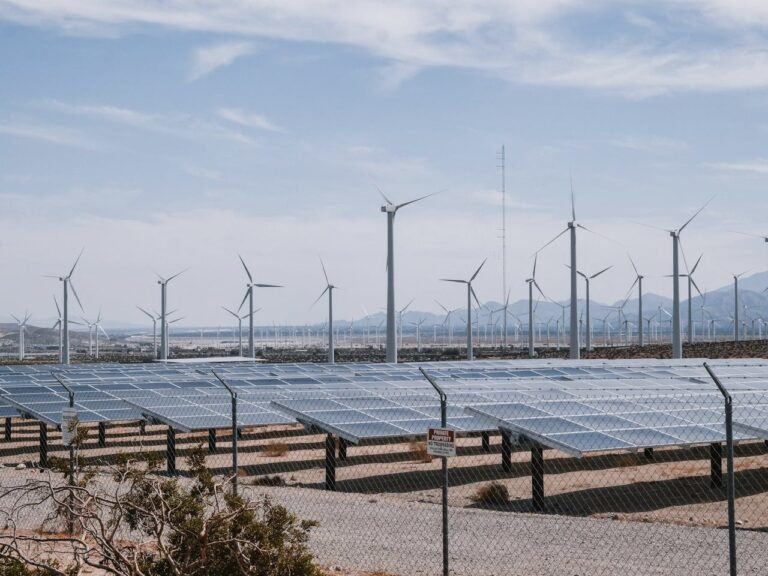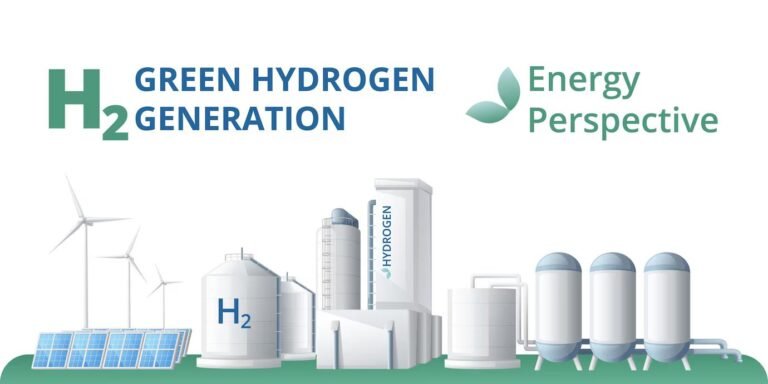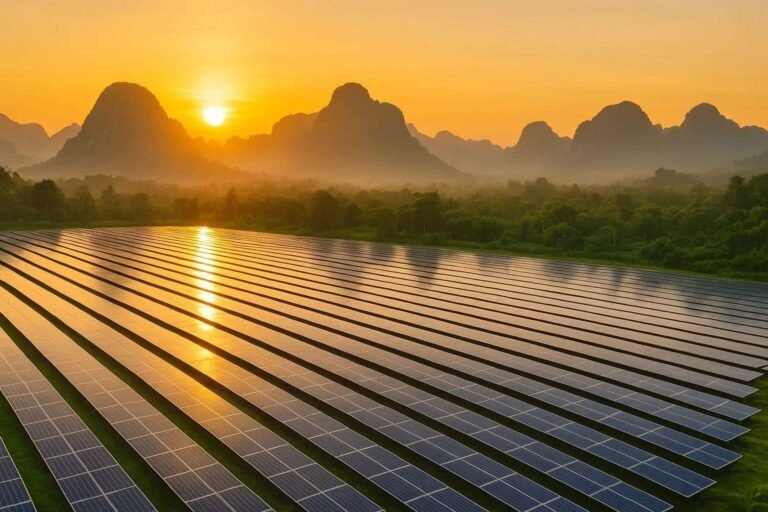When we talk about renewable energy, solar and wind usually steal the spotlight. They’re highly visible—solar panels shimmer on rooftops, and wind turbines spin proudly across hills and fields. But geothermal works quietly underground, drawing on the Earth’s natural heat, unnoticed by most of us.
That low profile is exactly why geothermal is so often misunderstood. It’s not flashy, but it’s consistent, reliable, and has huge potential. According to the International Renewable Energy Agency (IRENA), in 2024, global geothermal electricity generation reached 16.3 gigawatts—a steady increase from 15.6 GW in 2023.
Countries like Iceland and Kenya have shown what’s possible. Iceland now sources about 27% of its electricity from geothermal sources, and Kenya generates nearly 50% of it. These aren’t just stats—they’re proof that geothermal can be a core part of a clean energy mix.
In this guide, we’ll look at what geothermal energy is, how it works, where it’s thriving, and the pros and cons you need to know.

What Is Geothermal Energy?
Geothermal energy comes from the heat beneath the Earth’s surface. This heat is left over from the Earth’s formation and is constantly renewed by the slow breakdown of radioactive elements deep in the planet’s core.
We can tap into this heat in several ways. It can be used to generate electricity, provide direct heating, or run geothermal heat pumps for efficient home heating and cooling. Because it’s available 24/7 and not dependent on weather, it’s one of the most reliable renewable sources.
There are three main types of geothermal power plants:
- Dry steam plants use steam directly from underground reservoirs to spin turbines.
- Flash steam plants bring high-pressure hot water to the surface, where it flashes into steam.
- Binary cycle plants use lower-temperature water to heat another fluid with a lower boiling point, which then vaporizes and powers a turbine.
The Pros of Geothermal Energy
1. Sustainable and Renewable
Geothermal energy stands out for its consistent availability, operating independently of weather conditions or time of day. Unlike solar panels that require sunlight and wind turbines that depend on wind, geothermal systems harness the Earth’s internal heat, which remains constant beneath the surface. This reliability enables geothermal energy to provide continuous, 24/7 power generation.
The Earth emits approximately 44.2 terawatts of thermal energy continuously, a figure that surpasses twice the world’s total energy consumption.
Marit Brommer, Executive Director at the International Geothermal Association, emphasises this advantage:
“The beauty about geothermal is that it has this huge benefit of always being on. We’re not dependent on any weather conditions—we’re dependent on good geology, and on good clients, meaning that we need to have a local relationship with our customers.”
This inherent stability makes geothermal energy a reliable “baseload” power source, capable of delivering a steady and uninterrupted flow of electricity. In regions where power outages are frequent, integrating geothermal energy into the grid can significantly enhance energy reliability and security.
2. It’s Super Clean Compared to Fossil Fuels
Geothermal energy is a significantly cleaner alternative to fossil fuels in terms of carbon dioxide (CO₂) emissions. According to the Intergovernmental Panel on Climate Change (IPCC), the median life-cycle CO₂ emissions for various energy sources are as follows:
| Energy Source | CO₂ Emissions (g/kWh) |
|---|---|
| Coal | 820 |
| Natural Gas | 490 |
| Geothermal | 38 |
| Solar PV | 41 |
| Wind | 11 |
These figures highlight that geothermal energy emits substantially less CO₂ compared to coal and natural gas, making it a more environmentally friendly option. While geothermal emissions are slightly higher than those of wind and solar PV, it still represents a significant reduction in greenhouse gas emissions relative to traditional fossil fuels.
It’s important to note that advancements in geothermal technology continue to improve its efficiency and reduce its environmental impact. These improvements further enhance geothermal energy’s role as a sustainable and clean energy source.
3. Small Land Footprint
Geothermal power plants indeed have a smaller land footprint compared to solar and wind energy installations. According to a 2009 report by the National Renewable Energy Laboratory (NREL), modern wind power plants in the United States require approximately 85 acres per megawatt (MW) for the total project area, with a direct impact area of about 0.7 acres per MW. For solar photovoltaic (PV) systems, a 2013 NREL report indicates that utility-scale ground-mounted PV installations necessitate about 8.3 acres per MW for projects between 1 and 20 MW and approximately 7.9 acres per MW for larger projects. In contrast, geothermal power plants typically require about 1 to 8 acres per MW, including the area for wells, pipelines, and the power plant itself.
Learn More: What Is the Difference Between Renewable and Nonrenewable Resources?
4. It’s Reliable Even in Harsh Conditions
When the sun doesn’t shine or the wind doesn’t blow, other renewable systems can falter. But not geothermal. It provides stable, consistent power year-round, making it a great backbone for a clean energy grid.
A great real-world example is Iceland, where geothermal energy plays a significant role in everyday life. Approximately 26.6% of Iceland’s electricity is generated from geothermal sources, and nearly 90% of homes are heated using geothermal energy. Even during long, dark Arctic winters, the power never stops flowing.
This kind of reliability is a game changer, especially for countries looking to reduce their reliance on imported fossil fuels.
5. It Creates Jobs and Uplifts Communities
Geothermal isn’t just good for the planet—it’s good for people, too. In many developing countries, geothermal projects have brought new jobs, better infrastructure, and technical training to local communities.
The Cons of Geothermal Energy
1. High Upfront Costs
Embarking on a geothermal project is akin to setting out on a treasure hunt without a detailed map. The initial phases—exploration and drilling—are expensive and uncertain. According to the World Bank, drilling a single geothermal well can set investors back between $20 to $30 million, with no guaranteed success. This financial gamble can deter potential investors, especially when the risk of not striking a viable geothermal reservoir looms large.
Case in Point: In Southeast Asia, countries like Indonesia and the Philippines sit atop vast geothermal potential. Yet, development has been sluggish. Financial constraints, coupled with regulatory and community challenges, have hampered progress. Efforts are underway to address these barriers, including regulatory changes and climate finance solutions, but the journey is ongoing.
2. Location-Specific Limitations
Geothermal energy isn’t a one-size-fits-all solution. Its effectiveness is largely contingent on geography. Regions with tectonic activity, such as the Pacific Ring of Fire, are prime candidates. Conversely, areas lacking such geological features may find geothermal development impractical or economically unfeasible. This geographical dependency limits the universal applicability of geothermal energy.
3. Environmental Risks
While geothermal energy is cleaner than fossil fuels, it’s not without environmental concerns.
- Surface Instability and Induced Seismicity: Extracting geothermal fluids can lead to land subsidence. For instance, the Wairākei geothermal field in New Zealand experienced ground sinking by up to 14 meters over several decades due to fluid extraction. Additionally, the process can induce minor earthquakes, a phenomenon known as induced seismicity.
- Release of Trace Gases: Geothermal operations can emit gases like hydrogen sulfide (H₂S). In places like Rotorua, New Zealand, H₂S emissions have been linked to health hazards, including fatalities in enclosed spaces.
4. Resource Depletion in Poorly Managed Systems
Think of a geothermal reservoir as a rechargeable battery. If not managed properly, it can be drained faster than it recharges. The Wairākei field serves as a cautionary tale. Decades of operation without adequate reinjection strategies led to significant pressure drops and reduced output. Such mismanagement underscores the importance of sustainable practices in geothermal operations.
5. Corrosion and Scaling
The very fluids harnessed for geothermal energy can be a double-edged sword. Rich in minerals, these fluids can lead to scaling—mineral deposits that clog machinery—and corrosion, which deteriorates equipment. A study highlighted that geothermal plants often grapple with silica and carbonate scales, which act as thermal insulators, reducing efficiency. Regular maintenance, including manual cleaning, becomes imperative, adding to operational costs.
Interactive Case Studies
Case Study 1: Hellisheiði Power Station, Iceland
Situated near the Hengill volcano, about 30 kilometers east of Reykjavik, the Hellisheiði Power Station is a testament to Iceland’s commitment to sustainable energy. Since its commissioning in 2006, this facility has grown to produce approximately 303 megawatts (MW) of electricity and 133 MW of thermal energy. The electricity powers homes and businesses, while the thermal energy provides hot water for Reykjavik’s district heating system, ensuring residents have access to warm homes and reliable hot water.
Beyond energy production, Hellisheiði is also home to innovative environmental projects like CarbFix, which captures and mineralizes carbon dioxide emissions underground, effectively reducing the plant’s carbon footprint.
Case Study 2: Olkaria Geothermal Complex, Kenya
Kenya’s Olkaria Geothermal Complex is a shining example of how renewable energy can drive economic and social progress. With an installed capacity of around 799 MW, Olkaria contributes significantly to Kenya’s energy mix, providing over 40% of the nation’s renewable energy.
The development of Olkaria has spurred job creation, with over 2,000 employment opportunities generated during various phases of construction and operation. Additionally, the project has led to improved infrastructure in the surrounding areas, including better roads and enhanced community facilities. Educational and training programs have also been implemented, empowering local communities with skills and knowledge to participate in and benefit from the geothermal industry.
Case Study 3: The Geysers, California, USA
Located in California’s Mayacamas Mountains, The Geysers is the world’s largest geothermal field, boasting an installed capacity of 1,517 MW. In the 1980s, the field faced challenges due to declining steam production, which threatened its sustainability. However, the introduction of innovative reinjection technology, where treated wastewater is injected back into the geothermal reservoir, has stabilized steam production and ensured the field’s longevity.
Today, the Geysers provide reliable and clean energy to several counties in California, meeting a significant portion of their power needs and demonstrating the potential of geothermal energy in reducing reliance on fossil fuels.
Learn More: Pros and Cons of Tidal Energy
Actionable Advice: Is Geothermal Right for Your Community or Project?
For Policymakers:
Encouraging geothermal development can be pivotal. Offering incentives for exploration and research can reduce upfront costs and attract investment. For instance, the U.S. Department of Energy’s Geothermal Technologies Office supports innovative projects to lower development risks. Additionally, funding workforce training ensures a skilled labor force ready to implement and maintain geothermal systems.
For Businesses:
Geothermal energy offers reliable heating solutions. Industries can utilize it for processes requiring consistent heat, while urban areas might implement district heating and cooling systems. A notable example is Montana State University, which integrated a geothermal system allowing energy sharing between buildings, enhancing efficiency. Evaluating locations near geothermal hotspots or repurposing depleted oil wells can further optimize resource utilization.
For Homeowners:
Considering ground-source heat pumps for your home’s heating and cooling needs can lead to significant energy savings. In the U.S., heat pump sales have been on the rise, surpassing gas furnace sales in 2022. Collaborating with certified geothermal installers for feasibility studies ensures that your system is tailored to your property’s specifics.
For Educators and Advocates:
Raising awareness about geothermal energy can start with interactive experiences. Organizing field trips to geothermal sites or setting up local exhibits can make the concept tangible. The Geothermal Rising Museum Exhibit, for example, showcases various applications of geothermal resources, educating the public on their benefits. Sharing local success stories further builds community support and understanding.
Conclusion: Harnessing Earth’s Heat Responsibly
Geothermal energy offers a promising path forward in our transition to clean energy, but it is not a one-size-fits-all solution. It thrives where geology permits and where careful management ensures sustainability. By combining cutting-edge technology with local knowledge and responsible governance, we can tap into this ancient power source to fuel a cleaner future.







